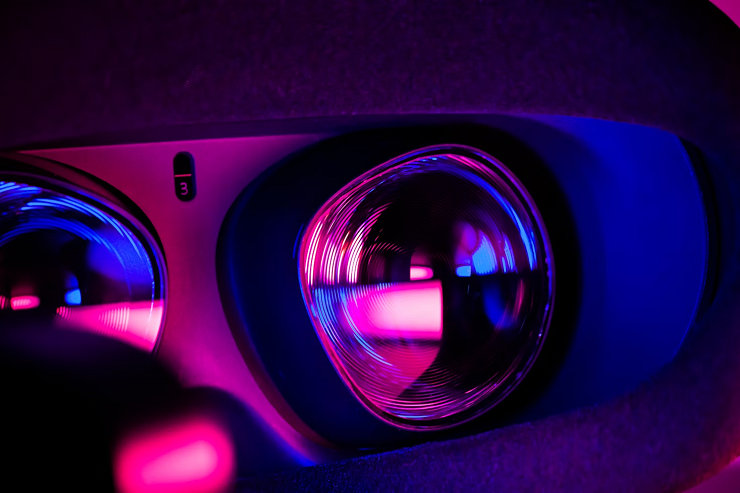
Augmented Reality is a type of interactive experience where a real-world environment is enhanced with computer-generated visual elements, sounds, and stimuli via holographic technology. AI embodies three features: a combination of digital and physical worlds, interactions made in real-time, and accurate 3-D identification of virtual and real objects. Augmented Reality offers a superior process to design, curate, and deliver consumable instructions by overlaying digital content in a real work environment.
Augmented reality (AR) has become increasingly prevalent in recent years, thanks largely to the popularity of mobile games like Pokemon Go. However, AR has the potential to be so much more than just a gaming gimmick. As the technology advances, we’re likely to see AR integrated into many aspects of everyday life. Here are just a few ways AR could soon change how we live, work, and interact with the world around us.
1. Enhanced Shopping Experiences
One of the most obvious applications of AR is in retail shopping. Imagine being able to virtually try on clothes or makeup without ever setting foot in a changing room. With AR shopping apps, you’ll be able to see how items look on you before you buy. Furniture and home goods retailers could also allow you to visualize items in your actual living space. This will enable more informed shopping and potentially reduce returns.
2. Interactive Learning
Educators are discovering AR’s power to create more engaging, interactive learning experiences. Textbooks are coming alive through 3D visualizations that students can manipulate with their devices. Museums are incorporating AR elements into exhibits, allowing visitors to access deeper content by scanning objects with a camera. Anatomy students are using AR to study detailed virtual dissections. The possibilities for AR to enhance traditional learning are endless.

3. Simplified Repair And Maintenance
Unable to figure out how to fix a leaky pipe or broken appliance? AR could provide a virtual guide showing you exactly how to complete repairs and maintenance on everything from home plumbing to auto repairs. By overlaying simple instructions right on the object in front of you, AR will make DIY troubleshooting and projects far less frustrating.
4. Enriched Travel Experiences
AR applications are poised to change the way we experience the world while traveling. Apps are in development that will overlay your camera view with descriptions of landmarks and buildings. Other programs will convert signage to the language of your choice in real-time. Museums and historical sites could allow you to visualize how they appeared originally. AR will empower travelers to learn about and engage with their surroundings in completely new ways.
5. Safer Driving
Driverless cars may still be a few years away, but AR technology in cars is already here. Existing features like back-up cameras will soon be augmented with alerts to potential hazards all around the vehicle. AR heads-up displays are in the works that would project critical information, like speed and navigation directions, right onto the driver’s line of sight. Such innovations promise to greatly reduce driver distraction and increase road safety.

6. More Meaningful Interpersonal Connections
Some worrying indicators suggest that increased use of technology is negatively impacting human relationships. However, AR might offer solutions for improving real face-to-face connections. AR glasses could transmit subtle cues to wearers during conversations, like the name and occupation of the person they’re meeting. Apps could also provide conversational prompts and reminders for engaging more thoughtfully with others. By subtly enhancing interpersonal communications, AR could help technology become a tool for deeper human connection.
7. Transformational Possibilities
As these examples demonstrate, AR has expansive potential to transform daily activities. What other ways might AR integrate into your typical day in the not-too-distant future? Here are a few possibilities:
- Holographic work meetings where remote team members can interact and collaborate as if sharing a physical space.
- Scanning grocery items to receive additional product information like sourcing ethics and nutritional content.
- Customized workout overlays that demonstrate proper form and technique for exercises at the gym.
- Restaurant menus that showcase visuals of each dish and flag allergen information.
- Navigation prompts are projected onto eyeglasses to guide users to destinations while walking or riding.
- Enhanced concerts and theater performances with elements like lyrics, actor bios, and behind-the-scenes footage appearing throughout.
- Realtor showings where you can change paint colors and rearrange furniture layouts to envision a space’s potential.

Also Read: The Revolution Of Extended Reality (XR): Blurring The Lines Between Real And Virtual
Conclusion
As AR technology matures, our creativity is perhaps the only limit to how it might transform daily life for work, play, and everything in between. While the most ubiquitous applications thus far have been in gaming, AR presents exciting possibilities for streamlining tasks, learning, safety, communication, and overall convenience. It is only the beginning of the unsurfacing of AR ecosystem that has the potential to take the world by storm. In the future, AR may become as integral to everyday routine as smartphones are today.
